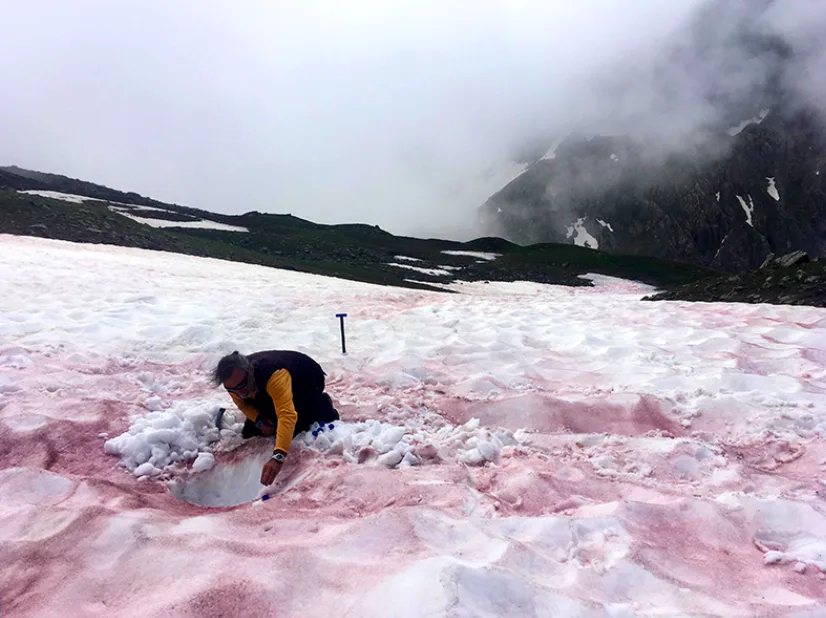
'Glacier blood' being studied by scientists to understand climate change
Microalgae have been found growing in snowy mountains thousands of metres above sea level, which scientists say could contribute to increased melting of snow and ice.
Red blotches appearing on once-pristine glaciers is one of the many changes icy landscapes are seeing as the climate warms. These stains are nicknamed “glacier blood” in the French Alps region and are actually microalgae that are flourishing due to rising atmospheric temperatures.
The ALPALGA Project consists of researchers that are studying this poorly understood phenomenon and are focusing on the microalgae in Europe’s Alpine mountains that have unique ecosystems due to their elevation of 1,000–3,000 metres.

Blood snow on Mount Ritter in California, USA. (Paul Wade/USDA/Wikipedia. CC BY 2.0)
Microalgae are photosynthetic organisms and measure just a few thousandths of a millimeter, but become visible if enough of them reproduce when conditions are ideal. These organisms can create high levels of pigments as they conduct photosynthesis, which can stain snow and glaciers red, orange, and green.
“In snow, microalgae can stain the surface in green, but most often, they become loaded with pigments that protect them from strong light, then staining the snow surface in red or orange. The appearance of “red snows”, already known in Antiquity, seems to be more and more frequent at high altitudes, as well as in the Arctic and Antarctic regions,” says The ALPALGA Project on their website.

Blood snow near summit of Chilkoot Trail, Chilkoot Pass, Alaska, USA. (Stefan Wackerhagen/Getty Images)
The researchers say that the “the snow is alive and populated with microalgae” in the French Alps and are focused on investigating green algae, which lives on the surface of rivers, rocks, and snow.
Scientists say this microalgae activity is concerning for several reasons. Firstly, the increasingly common presence of these coloured blotches on frozen surfaces indicate that temperatures are climbing.
Secondly, the microalgae are darker than the reflective white surfaces they are growing on, which causes the landscape to absorb more heat from the sunlight instead of reflecting it away from Earth and back out into the universe. This also causes the surface to heat up, which accelerates snowmelt and contributes to the expansion of areas devoid of ice and snow.
The ALPALGA Project’s study, published in Frontiers in Plant Science, details the genetic analysis of the DNA of green algae collected from five different areas in the French Alps. Some of the topics that the researchers will continue to investigate include: the microalgae’s life cycle, how they develop, how they are transported, how they affect mountainous environments, and how they react to the changing climate.
Thumbnail credit: Jean-Gabriel VALAY/JARDIN DU LAUTARET/UGA/CNRS












